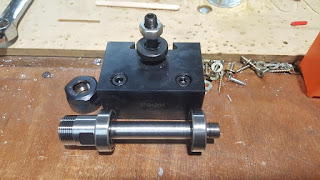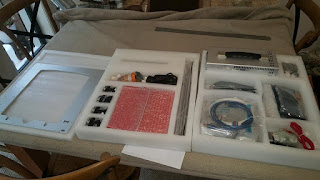I had an application that needed to take an off-the-shelf water flow meter and allow it to be towed at various depths. The lead time for similar items was more than I could afford and not quite what I was after.
So I decided to make it. After looking at options of sand casting in lead or bronze, 3D printing plugs and casting lead in plaster moulds and PU castings. I decided a turned brass weight was the easiest approach for a one-off build. A CNC lathe would have been perfect, but I haven't converted the lathe yet. So I had to use a good old MS Excel spreadsheet to give co-ordinates and manually turn it using the digital read out on the lathe.
550mm of 101.6mm OD solid brass stock. I was a surprised by the amount of run out and bend in the stock section, though I luckily had enough stock clearance.
The design was around a NACA 0021 section. Picked for several reasons:
1. Convex surface all over, means easier to fair by hand over NACA 64xx sections
2. NACA 00xx series is a common all rounder with smooth drag "bucket"
3. 21% cord gave me the best compromise is stock length, diameter (cost) and what could fit on my lathe.
Starting the roughing
Fine step downs.
After smoothing step downs with a lathe file.
Starting of the forward sections.
After smoothing with the file
400 grit wet and dry finish
Drilling the adjustable anchor points so the axis of the tow line can be set forward of the centre of gravity during different tow angles/speeds.
Drilled and tapped.
Turning around to tap the fwd end.
Ready for equipment interface.
Anchor points installed. Smaller, low profile fittings would be preferred. The extra screws are used with cross drilled heads so locking wire can be used on the eye bolts. This provides a positive lock against undoing during towing.
This simple commercial river water flow sensor uses an impeller, magnet and read switch to count revolutions per second.
Giving it a first run on a mates boat.













































































